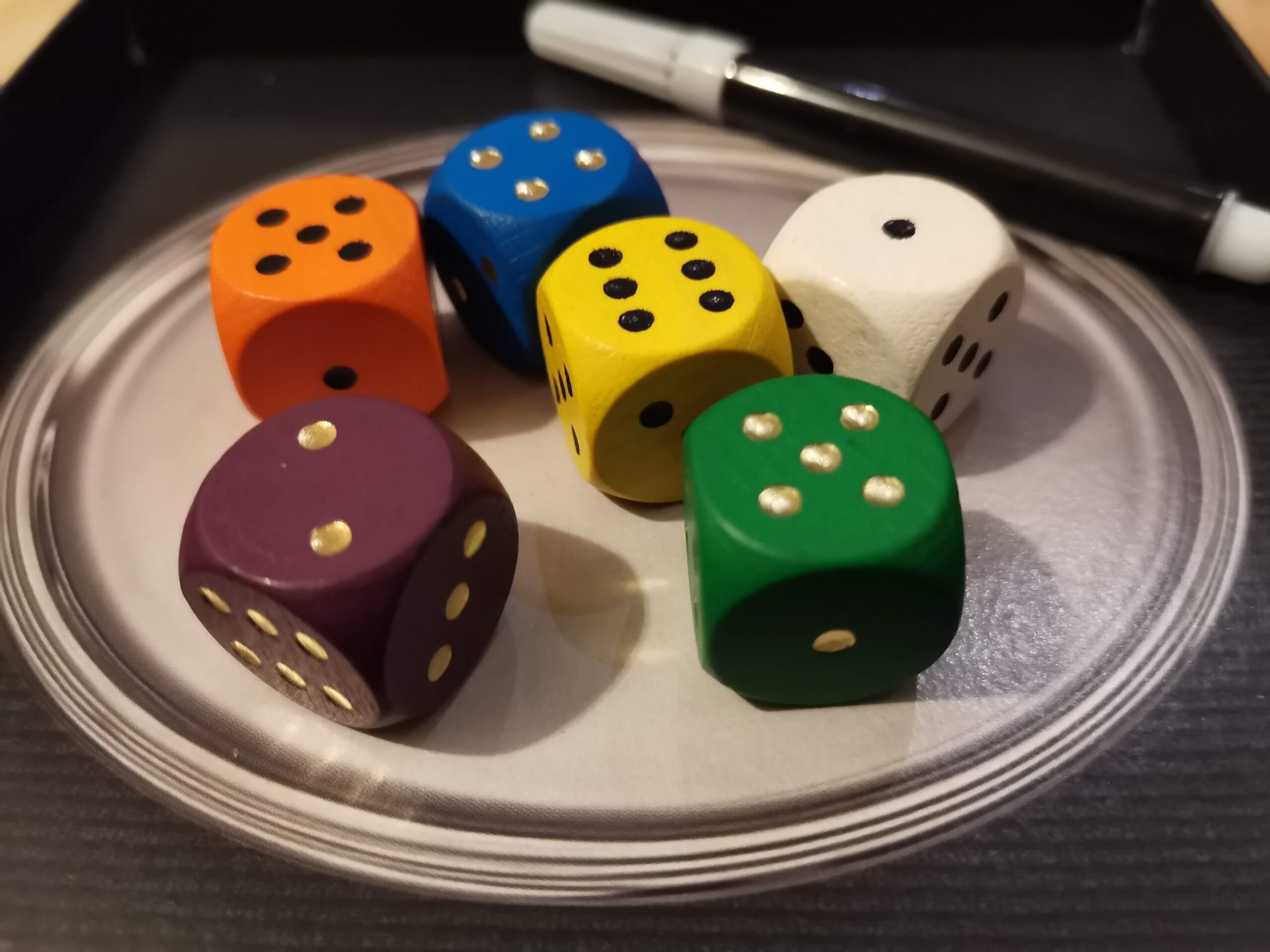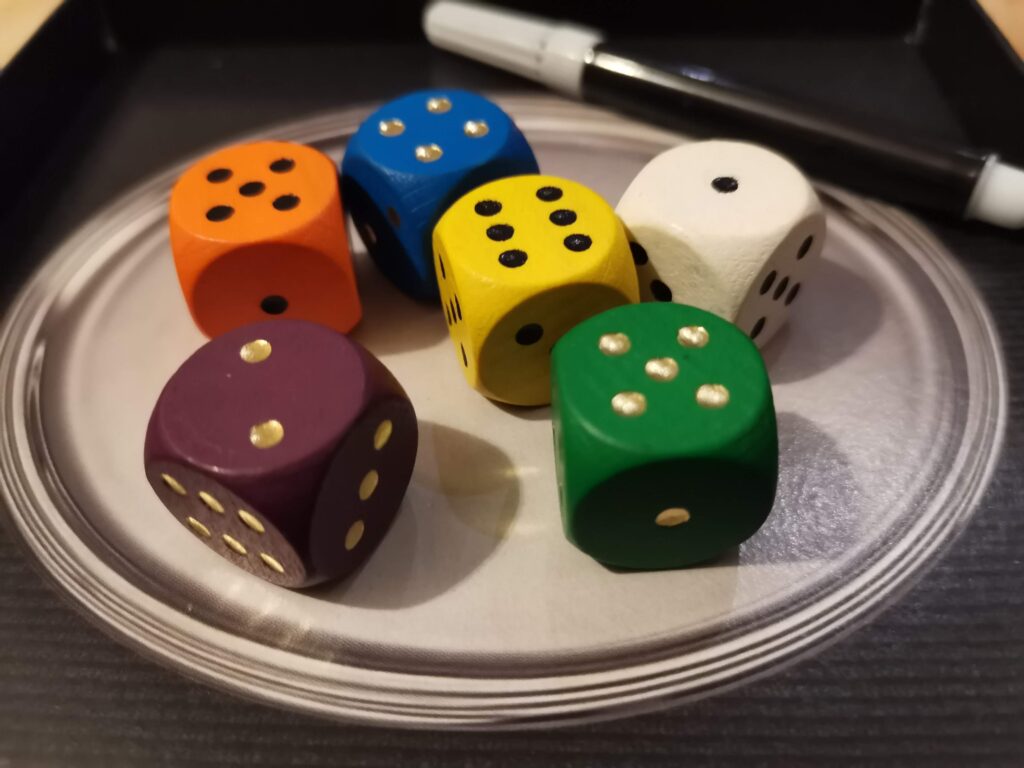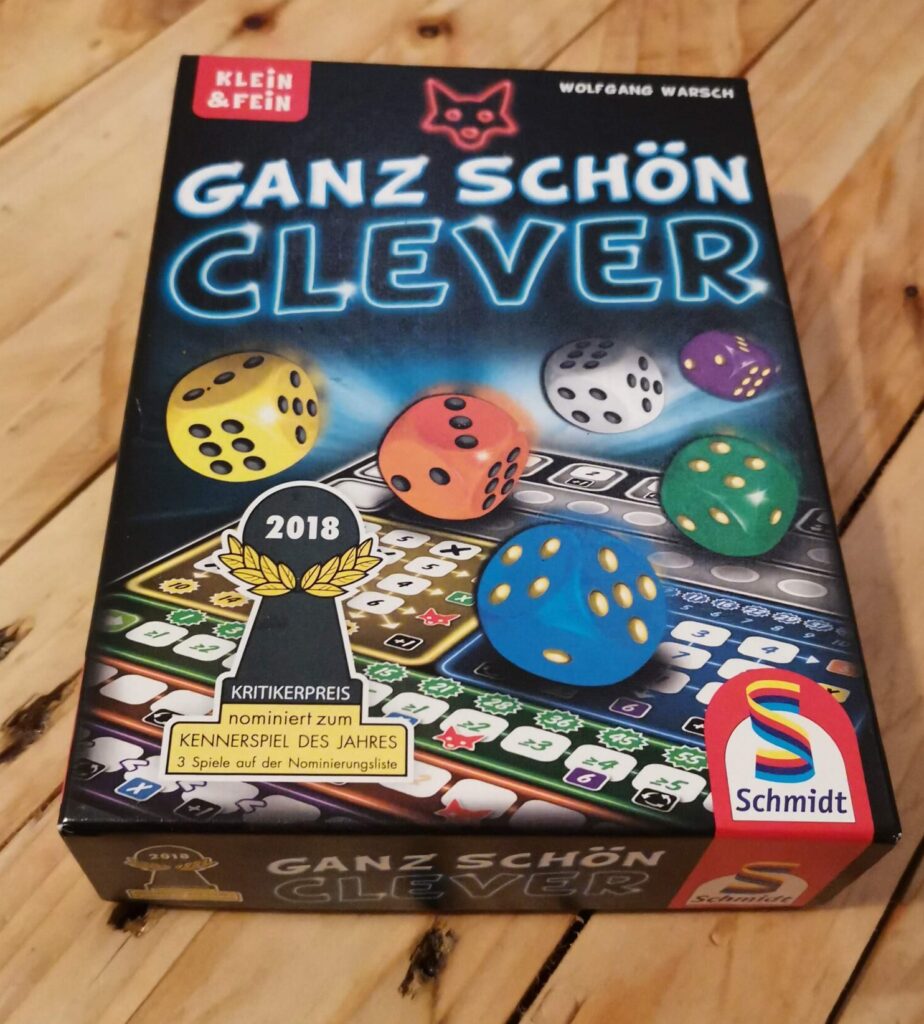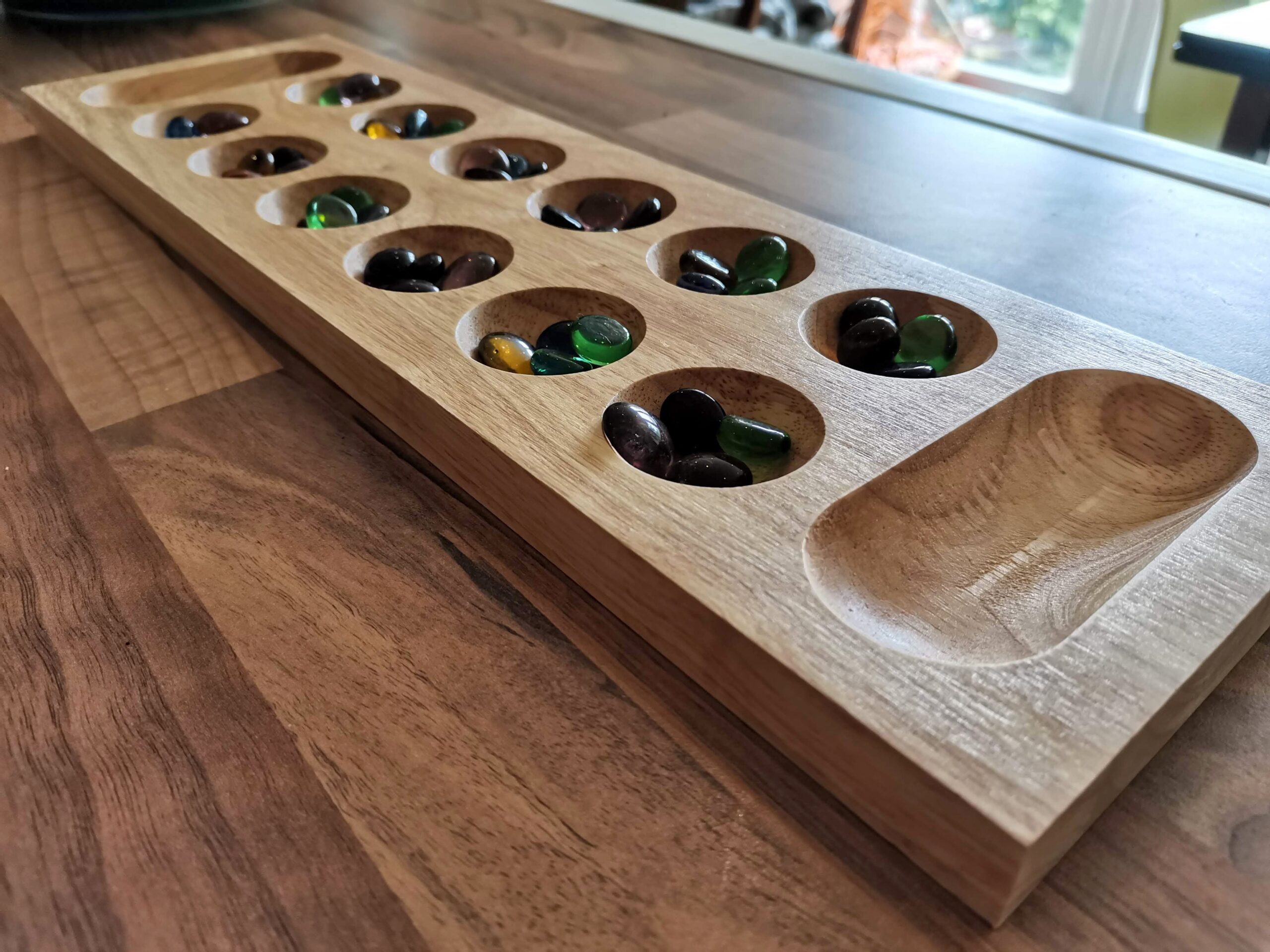Ganz Schön Clever Review

Ganz Schön Clever, also known as That’s Pretty Clever, is a roll and write game from Schmidt, designed by Wolfgang Warsch. It’s a nice little game that you can take anywhere and plays in around 10-15 minutes per player.

What’s In The Box?
Not much actually. There are six coloured dice, four felt-tip pens, which make up the ‘roll’ and ‘write’ parts of the game respectively. There’s a thick pad of scoring sheets which tear off, and the box insert has the silver dish printed on it (see the image above), which is used in the game.
How Does It Play?
The game runs over 4 – 6 rounds, depending on the number of players. On each player’s turn they take all six dice and roll them. Each colour relates to a different area on the scoring sheet, and players choose one to claim and then mark off a matching space on the sheet. The die is then placed in one of the three boxes on the score sheet.


Here’s where the strategy starts to come in, After you choose your die and place it on your sheet, any dice with a lower value go on the silver tray in the box. The remaining dice are rolled again and it all happens again, and then once more for a third and final time. At this point, the ‘active’ player now has three dice on their sheet, at least three boxes filled in on their sheet, and three dice on the silver tray. Then each passive player (i.e. the players not rolling dice) gets to choose a die from the tray, and cross it off their own sheet. Play now moves to the next player and the same thing happens again, until everyone has played and the round ends.
At the beginning of each round, all players get a bonus. This is either a re-roll to use at any point, a +1 which lets them claim an extra dice at the end of their turn, or a wildcard which lets them cross off/write a 6 in any of their boxes.
Each colour has a different method for scoring.
Yellow – cross out a box matching the number on the yellow die. Complete columns score points at the end, rows give bonuses during the game.
Blue – to cross out a blue number, the value of the blue die is added to the value of the white one. Complete rows and columns grant bonuses, and the total number crossed-out scores points at the end.
Green – each box has a number in. If you roll at least that on the green die, you can cross out a box. Bonuses are scored along the track, and game end scoring depends how far along you go.
Orange – just write the orange die’s value in the box. Some boxes double the value, and the game end scoring is the total of all the numbers written in the boxes.
Purple – similar to orange, you write the value of the purple die in the box. The only rule is that each die claimed has to be greater than the previous. Once you get a six, you can continue from one. As with orange, the game end score is the total of all the boxes
White – the white die is a wildcard and acts as any colour. If it’s used for the blue box, it has to add the value of the blue die.
The only other scoring mechanism are the foxes printed on the sheet. Each coloured box has a fox you can gain if you cross out the corresponding boxes, and at the end of the game players are granted a bonus of total number of foxes x lowest scoring area.
What really makes this game shine is the combinations you can set-up. Some boxes, when crossed out, let you fill in another on another colour. So for example, you might write a number into an orange box which lets you cross out a box in yellow. But that box you cross out in yellow might complete a row which lets you cross out a green, and maybe that green lets you cross out one in blue. It’s an immensely satisfying mechanic when you get it working for you.
Final Thoughts
Ganz is a great little game. It has almost no set-up or tear-down time, it can be played just about anywhere, and it’s small enough to fit in a coat pocket to take somewhere. It’s extremely easy to learn, and you can easily fit two or three games in in an hour.
I love the combinations when they work, and there’s enough strategy involved to keep you coming back again and again. I’ve played it over 40 times now, and I still enjoy playing it. And most of those plays have been solo, there’s enough game here to keep you coming back to beat your own scores.
Some people don’t like anything with dice, claiming it’s too chance-driven, and while that’s true to a certain extent, there’s plenty of mitigation available in Ganz Schön Clever. You get a few chances to re-roll during each game, and the +1 bonuses can help you use dice you didn’t get a chance to. But in all honesty, it’s just part of the fun. This isn’t complex Eurogame, it’s a lightweight roll and write, and should be enjoyed for what it is.
It’s cheap, it’s easy, it’s fast, and it’s small. You should try it.












